Is Drawing Dead?
by Maggie Flickinger
Going on now and running through Saturday, Yale School of Architecture is holding an intriguing symposium titled, “Is Drawing Dead?” While the architectural profession was established with hand drawing as a foundation for communicating design ideas, today many architects rarely put pen to paper. In the face of rapid progression and adoption of digital drafting, modeling, and rendering tools, hand crafted mapping of space, volume, and scale has been relegated to a romantic anachronism – or at worst, obsolete. Yet, as rumblings of a post-digital age foment, a return to the hand’s value is spreading: as slow food gains traction, why not slow architecture?
At our studio, trays of jumbled colored pencils and a veritable riot of Prismacolors lie beside our computer keyboards and mouses. Sheets of trace paper crumple and layer, building a tangible memory of design evolution. Microns, Maylines, charcoal, Sharpies, Sign Pens, and even the humble #2: these are tools of our trade. In a studio that encourages drawing, it remains an indefatigable tool for quick communication, conveyance of emotion, and evocation of experience. One reason for this is that drawing is simply common. Each and every person in the world, regardless of training, knows the capability of picking up a pencil and making an idea known. When an architect presents ideas in hand drawings, the communication tool is commonly held: inherently relatable, approachable, and understandable to all. When an architect presents ideas in digital renderings, that common ground is lost. The tool itself is precious, and at times intimidating.
As we move through a design, we inevitably transition to the digital realm and see value there for technical drawings and interprofessional communication. Prior to that, the value of the hand lies across the spectrum of process.
Below, each studio member shares one of their hand drawings, along with musings on why hand drawing is – assuredly and decidedly – not dead.

“My design process has always utilized overlay sketching to facilitate the evolution – and mind mapping – of an idea. Yellow trace, color pencil, and felt tips provide a record of plan development as well as notated suggestions of action & spirit” – DAVID

“Drawing by hand is strangely similar to smell as a mnemonic trigger. By looking at this sketch I recall my thought process in detail, in part because it is still visible in the drawing process but also because I have a strong physical memory of doing the drawing.” – NICOLE

SAM “A quick section sketch can illustrate the basic site responses and construction systems.”

“The intention here is to show the building’s relationship to the landscape, so capturing the depth and feel of the landscape – the big Colorado sky, the distant views across the bluff – was critical. Hand rendering is arguably a more successful medium than digital to convey the subtleties in value, contrast, and texture necessary to illustrate this vision.” – LAURA

“On-site communication to yourself, the contractor, the fabricator and the client. Not to say a computer couldn’t do it!” – NATHAN

“I used a casual, sketchy style to quickly convey whimsy & color, allowing a client to imagine the feel of experiencing this outdoor space” – MAGGIE

“The contrast between dark and light can be quickly conveyed with charcoal.” – AMY

“In Dushanbe, Tajikistan, hand drawing on trace was essential in providing overnight design evolution of the Friendship Center. Meeting with the Mayor the following morning, quick evocative drawings conveyed the design while internet and a print shop were nonexistent. The irony is that we were designing a gift that was a cybercafe!” – DAVID

“This drawing helped a client visualize and approve a construction detail, while the process of hand drawing the detail helped to solidify the constructability in my mind.” – GREG

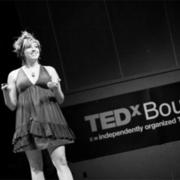







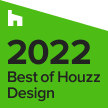
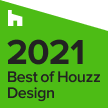
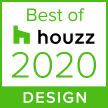
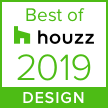








I shared this with my friends on Facebook…
Benjie Nycum: I draw by hand every day. When people draw by hand you see their method. Drawing forces methodical thinking. It is constructive, sequential. When drawings reside on a computer there is only product for consumption. The process is not visible and therefore there is no collaboration, just result -this is why people feel intimidated. Lastly the results of copy/paste of unrelated but occasionally helpful drawings from other projects starts a spiral of errors that cannot be reversed until it is much too late. For these reasons slow architecture is much faster in the end.
Nicole Delmage: I feel the same way. Occasionally I struggle with communicating how essential drawing is to successful problem solving when it is clearly expected that the process happens in the head alone. If I make an equation of your words, methodical + constructive + sequential, I think it gets clearer.
Benjie Nycum: The methodological point is that when you draw by hand you start with what you know and build as information and thought evolves. But on a computer you often start with bits and pieces from other things. Copy/pasting, extruding, exploding, blocking etc. This allows you to suspend being thoughtful about fundamental components as you focus instead on converting pre-existing information. This is where true information is missed. It rarely feels fast to draw by hand, but i think its much more confident and consistent.
Benjie is an architect in Halifax, Nova Scotia
Maggie – thanks for your inspiring words and great images. Your office is on the right path! I’ve been tirelessly promoting the integration of traditional hand drawing methods in the design process – especially in early concept phases of projects. Clients really engage in the design conversation and light up when they see original hand drawings. What’s so fascinating now is how we as designers can integrate wonderful digital tools such as SketchUp, Shaderlight and Photoshop with traditional communication methods to create amazing hybrid graphics. I don’t believe we need to drop back to 100% traditional hand drawing but rather know how to be strategic with what visual options to choose and at what step in the design process we use them. Nothing beats pencil on paper to quickly generate and idea, but why not a stylus pen on an iPad to achieve the same results? Certainly the next generation of design students are heading in that direction. I have a large global audience following my weekly blog posts on new hybrid techniques that merge traditional hand drawing with digital imaging. I’m currently exploring a process called “digital watercolor” that transforms the standard SketchUp model scene into an amazing visual graphic integrating new printer technology, colored pencils, color markers, hand sktchng and digital manipulation. Very excitng technique never been explored until now!
Jim Leggitt, FAIA author of Drawing Shortcuts
What a nice post, I like drawing but as a developer all my notes didn’t fit in anything not on paper, not on doc or txt.
I now use a boox cooler e-ink it has the same feeling. And as it’s a personal note taker I add lots of little drawings to it a bit like small cartoons or illustrated drawing where a bug becomes a dark fly etc.
Fun or childish as that might sound I note that brings back Creativity back into my job. Drawing is fun drawings are nice creative and moves the mind around a problem in different ways.